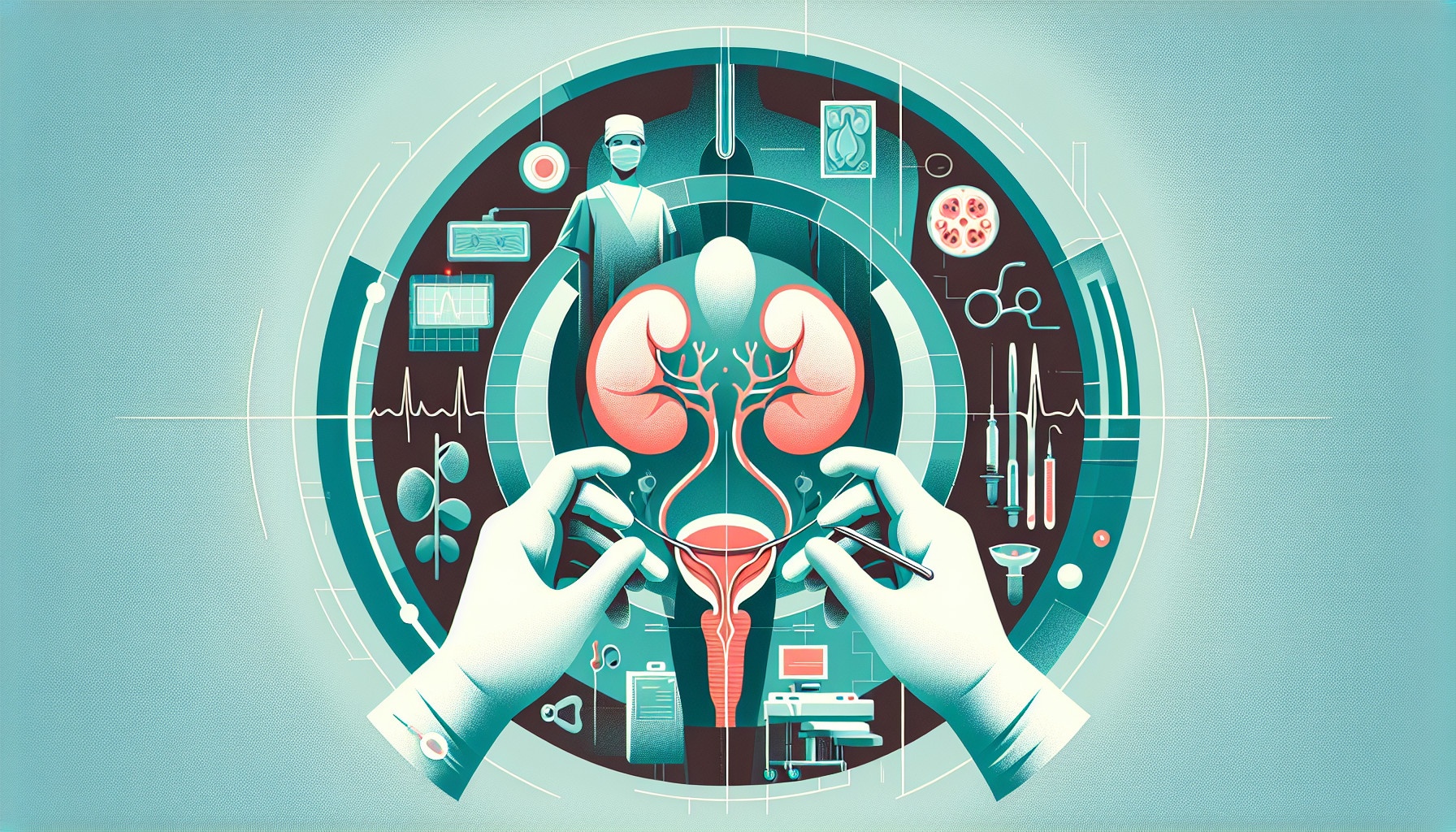Our Summary
This research paper examines two different methods for treating bladder injuries caused by a sharp object or force. The traditional method is open surgery, while a less invasive approach has also been explored. The study looked at the results of both methods, comparing the number of complications and the length of hospital stays.
Bladder injuries were quite rare among the patients looked at, with a small percentage being caused by a penetrating force. Within this group, a few were treated using the less invasive method. The study found that this approach led to fewer complications and shorter hospital stays compared to the traditional open surgery.
However, the researchers note that the majority of these penetrating bladder injuries do still require open surgery. The less invasive approach only seems to work better in certain cases. Yet, this finding could help improve treatment plans for future patients with similar injuries.
FAQs
- What are the two methods of treating bladder injuries discussed in the research paper?
- How does the less invasive approach to bladder surgery compare to the traditional open surgery in terms of complications and length of hospital stay?
- Do all penetrating bladder injuries require open surgery according to the research findings?
Doctor’s Tip
One helpful tip a doctor might tell a patient about bladder surgery is to closely follow all pre-operative and post-operative instructions provided by the medical team. This includes maintaining proper hygiene, taking prescribed medications as directed, and attending all follow-up appointments. Additionally, it is important to communicate any concerns or changes in symptoms to your healthcare provider promptly. Following these guidelines can help ensure a successful recovery and minimize the risk of complications.
Suitable For
Patients who are typically recommended bladder surgery include those with:
Bladder cancer: Surgery may be recommended to remove cancerous tumors or the entire bladder in cases of advanced cancer.
Bladder stones: Surgery may be necessary to remove large or painful bladder stones that cannot be passed naturally.
Bladder prolapse: Surgery may be recommended to repair a prolapsed bladder, where the bladder drops down into the vaginal area.
Urinary incontinence: Surgery may be recommended for severe cases of urinary incontinence that do not improve with other treatments.
Bladder diverticulum: Surgery may be necessary to remove a bladder diverticulum, which is an outpouching of the bladder wall.
Bladder outlet obstruction: Surgery may be recommended to remove obstructions in the bladder outlet, such as bladder neck strictures or urethral strictures.
Interstitial cystitis: Surgery may be considered for patients with severe interstitial cystitis that does not respond to other treatments.
Overall, the decision to recommend bladder surgery is based on the individual patient’s condition, symptoms, and response to other treatments. It is important for patients to discuss their options with their healthcare provider to determine the best course of treatment for their specific situation.
Timeline
Timeline of patient experiences before and after bladder surgery:
Before surgery:
- Patient experiences a bladder injury caused by a sharp object or force.
- Patient undergoes diagnostic tests such as imaging studies to determine the extent of the injury.
- Treatment options are discussed with the patient, including the possibility of open surgery or a less invasive approach.
- Surgical consent is obtained from the patient.
- Patient undergoes pre-operative preparation, which may include fasting and medication management.
During surgery:
- Patient is placed under general anesthesia.
- Surgical team performs the chosen method of bladder surgery, either open surgery or a less invasive approach.
- The bladder injury is repaired, and any necessary procedures are performed to ensure proper healing.
After surgery:
- Patient is closely monitored in the recovery room for any immediate post-operative complications.
- Pain management is provided to the patient as needed.
- Patient is gradually allowed to resume normal activities, with restrictions on physical exertion as advised by the healthcare team.
- Follow-up appointments are scheduled to monitor the patient’s progress and ensure proper healing of the bladder injury.
- Long-term follow-up may be necessary to address any potential complications or concerns related to the surgery.
What to Ask Your Doctor
What are the risks and benefits of each type of bladder surgery (open surgery vs. less invasive approach)?
How long is the recovery time for each type of surgery?
What are the potential complications of bladder surgery and how are they managed?
Will I need to follow any special post-operative care instructions after the surgery?
How successful is bladder surgery in treating bladder injuries caused by a sharp object or force?
Are there any alternative treatment options for bladder injuries that I should consider?
What is the likelihood of needing additional surgeries or treatments in the future after bladder surgery?
How experienced are you in performing bladder surgery and what is your success rate with this procedure?
What type of anesthesia will be used during the surgery and what are the potential side effects?
How long will I need to stay in the hospital after the surgery and what is the expected outcome of the procedure?
Reference
Authors: Culhane J, Syed JR, Siddiqui S. Journal: BMC Urol. 2021 Sep 28;21(1):138. doi: 10.1186/s12894-021-00900-w. PMID: 34583674
